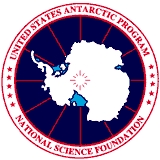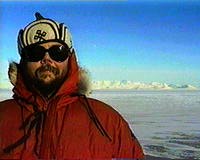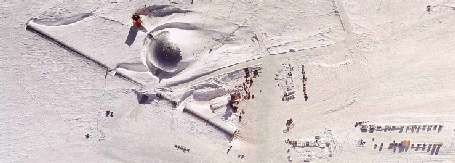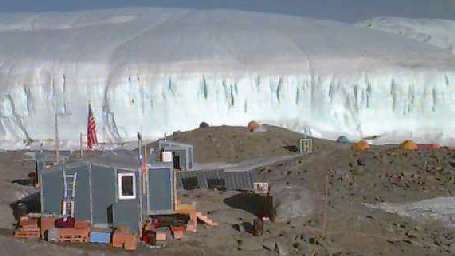
Science
Penguins!
Lake Vostok
Sunrise and Sunset Charts
The Ozone Hole
Antarctic Climate
Pictures
Featured Picture

Self Portrait in front of the Transantarctic Mountains, March 1995
My Photo Gallery
On Location
Amundsen-Scott South Pole Station
McMurdo Station
Lake Hoare
Journals
Oldest - March, 1995
Newest - February, 1997
Index
Search
Antarctic Slang
Awards



Got a question about the Seventh Continent?
Have a suggestion? Found a cool Antarctic link? Or, do you just want to talk
about the bottom of the world? Drop us a line!
erd@iname.com

|  |
Living and Working on the 7th Continent

Amundsen-Scott South Pole Station
Perched on over two miles of solid ice, the South Pole
station is home to 160 people in the summer but only 28 in the winter.
This year, the winter-over population will be much larger, over 50,
because of the labor requirements to construct the new South Pole station.
The Dome, built in 1975, is getting buried too deeply in the snow to dig
out every year and needs to be replaced. The new station should be online
in a few years.
Parts of it
are already operational.

McMurdo Station
Sitting on the southern tip of Ross Island, 2,200 miles
(3.500 km) due-south of New Zealand, McMurdo serves as the logistics hub
for half the continent. In addition to the primary focus of the work
here, science, a good part of the 1,000 summer residents (180 in the
winter), process the thousands of tons of cargo brought in each year by
air and by sea. Without this effort, there would be no Field Camps; there
would be no station at the South Pole.

Lake Hoare in the McMurdo Dry Valleys
Out in the field, the science's the thing. The Field
Camp at Lake Hoare is one of several in the region, and is the one that
I had the pleasure to work at for a few days in 1995. The Dry Valleys
are so called because it doesn't snow there. The terrain prevents the
right conditions from occuring that permit precipitation. Lake Hoare,
for example, along with Lake Bonney and Lake Fryxell, is nestled between
the high walls of the Taylor valley, tucked between tall glaciers.
Moist air can't clear the terrain to bring in the snow. Protected,
the frozen lake systems provide an excellent opportunity to study simple
life forms surviving in amazingly harsh conditions.
|










